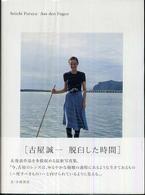- ホーム
- > 洋書
- > 英文書
- > Architecture
Full Description
Mapping Urban Spaces focuses on medium-sized European cities and more specifically on their open spaces from psychological, sociological, and aesthetic points of view. The chapters illustrate how the characteristics that make life in medium-sized European cities pleasant and sustainable - accessibility, ease of travel, urban sustainability, social inclusiveness - can be traced back to the nature of that space.
The chapters develop from a phenomenological study of space to contributions on places and landscapes in the city. Centralities and their meaning are studied, as well as the social space and its complexity. The contributions focus on history and theory as well as concrete research and mapping approaches and the resulting design applications.
The case studies come from countries around Europe including Poland, Italy, Greece, Germany, and France, among others. The book will be of interest to students, scholars, and practitioners in architecture, urban planning, and landscape architecture.
Contents
INTRODUCTIONThe ArcheA Method
Lamberto Amistadi
PART 1: MAPPING SPACES. The Phenomenological Approach to the City of Spaces.
1. A Spatial Understanding of Architecture and the City.
2. Landmarks in a History of Spatial Mapping.
3. The Many-faceted Notion of Space: On the Hypothesis of Mapping and the Observation of Spatial Phenomena.
4. Stadtraumgestaltungen: On Perceiving and Reading Urban Spaces.
5. Where the Compact and Open City Meets: Inner and Outer Spaces on the Periphery of Aachen North.
6. Here and There: On the Ambivalence of Transitional Spaces.
PART 2: MAPPING PLACES. The Italian Tradition of Urban Studies.
7. Drawing the City. Form and Meaning.
8. Urban Events and the Soul of the City. The Poetic Political Tripartition of Urban Form.
9. Civic Urbanity. The Places of Everyday Life.
10. Venice as a Paradigm: Urban Studies and the Value of Emptiness in the City's Design.
11. Nature Prepares the Sites, But It Is Man Who Creates the Organism: Bologna Through Its Geography, Its History and Its Planning Tools.
12. New Urban Landscapes. Fragments of Civil Architecture.
PART 3: MAPPING NATURAL SPACE. The Significance of Landscapes for the Urban Project
13. The Role of Green Spaces in Urban Design Theories in France.
14. Green Space as an Element for a New Urban Dynamic.
15. Uses of Mapping: Methods of Investigation and Ways of Narrating Territory in Architectural Practice and Teaching.
16. Towards a More 'Natural' City?
PART 4: MAPPING CENTRALITIES. Urban Regeneration towards a Polycentric City.
17. The Long-Term Method of the Urban Project in Italy and the Parma School.
18. Designing the European Medium-Sized City. Urban Regeneration Technique Through the Structured Densification of the Centrality System.
19. The Project of a Metropolitan Urban Centrality. The Case of the Former Fruit and Vegetable Market of Bologna.
20. Densification as the Key to Suburb Regeneration. The Case of Driescher Hof In Aachen.
21. The European Medium-Sized City: The Characteristics of the Urban Form.
22. The Idea of Space and Urban Sequences. The Case of Parma.
PART 5: MAPPING SOCIAL SPACE. Demographic Analysis as an Image of Urban Complexity.
23. Mapping Urban Spaces with the Use of Physical, Digital and Augmented Reality Models: Experiences from Applications in Architectural and Urban Education.
24. The Urban Circle of Life' of People with Disabilities: Mapping Urban Inconveniences.
25. Multigenerational Spaces in Conceptual Urban Projects in Polish Cities.
AFTERWORDProblems of the Contemporary City
Raffaella Neri







